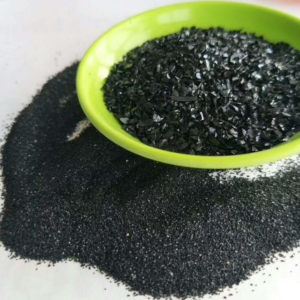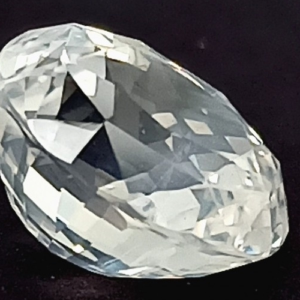Are there different grades of crystal clarity?
Yes, there are different grades of crystal clarity, and these grading systems vary depending on whether the crystals are natural gemstones or man-made crystal products. Here’s a detailed look at the different grading approaches in various contexts:
Gemstone Grading (for Natural Crystals Used as Gemstones)
- Diamond Clarity Grading :
- Flawless (FL): This is the highest grade of diamond clarity. In a flawless diamond, no inclusions or blemishes are visible under 10x magnification. Such diamonds are extremely rare and highly prized. They allow light to pass through and interact with the diamond’s facets in the most optimal way, resulting in maximum sparkle and brilliance. For example, in a high-end engagement ring, a flawless diamond would be a centerpiece of extraordinary beauty and value.
- Internally Flawless (IF): In an internally flawless diamond, there are no inclusions visible under 10x magnification, but there may be very minor surface blemishes that are typically extremely difficult to detect without specialized equipment. These diamonds are also of exceptional quality and are often used in luxury jewelry pieces where the highest level of clarity is desired.
- Very, Very Slightly Included (VVS1 and VVS2): In VVS diamonds, inclusions are so minute and difficult to see that they are barely detectable under 10x magnification. VVS1 has slightly fewer and less visible inclusions than VVS2. These grades are still considered very high quality and are popular choices for fine jewelry, as the inclusions have minimal impact on the diamond’s overall appearance and sparkle.
- Very Slightly Included (VS1 and VS2): VS diamonds have inclusions that are small and may be visible under 10x magnification but are not obvious to the naked eye. VS1 typically has fewer and less noticeable inclusions compared to VS2. These grades offer a good balance between quality and affordability and are commonly used in a wide range of jewelry, from engagement rings to earrings.
- Slightly Included (SI1 and SI2): SI diamonds have inclusions that are more noticeable under 10x magnification and may even be visible to the naked eye in some cases, especially in SI2. However, with proper cutting and setting, these diamonds can still exhibit good sparkle and are often chosen for jewelry where a larger carat size might be prioritized over absolute clarity perfection.
- Included (I1, I2, and I3): In these grades, inclusions are visible to the naked eye and can significantly affect the diamond’s appearance and clarity. I1 has the least severe visible inclusions among this group, while I3 has the most prominent and numerous ones. Diamonds in these grades are generally less expensive and may be used in more budget-friendly jewelry or in settings where the inclusions can be somewhat concealed.
- Grading for Other Gemstones (e.g., Emeralds, Sapphires, Rubies):
- Different gemstones have their own specific grading criteria, but they generally also consider the presence and visibility of inclusions. For example, in emeralds, inclusions are often more common due to their formation process, and a certain level of inclusions is somewhat tolerated as long as they don’t overly detract from the gemstone’s overall beauty. Some emeralds may be described as “eye-clean,” meaning that no inclusions are visible to the naked eye, which is considered a good quality level for this gemstone.
- Sapphires and rubies also have grading systems that take into account the type, size, and distribution of inclusions. High-quality sapphires and rubies with few inclusions and good transparency are more valuable, while those with more visible flaws are less so. However, some unique inclusions in these gemstones can sometimes add to their character or be an indication of their origin, so the assessment is more complex compared to diamonds.
Man-Made Crystal Grading (e.g., for Cut Glass Crystals like Austrian Crystal or Swarovski Crystal)
- Manufacturer-Specific Grading:
- Some manufacturers of high-quality cut glass crystals have their own internal grading systems to classify the clarity of their products. For example, Swarovski Crystal is known for its high level of clarity and consistency. The company likely has strict quality control measures to ensure that its crystals meet certain standards of transparency and freedom from visible defects. While they may not use the same formal gemstone-like grading terms, they do sort and categorize their crystals based on how clear and flawless they are for different applications.
- Austrian crystal producers also have ways to grade their crystals in terms of clarity. Generally, the better the clarity, the higher the quality tier of the crystal product. Crystals with excellent clarity are used for more premium jewelry, decorative items, or chandeliers, while those with slightly less clarity might be used in less demanding applications or in more budget-conscious products.
- General Descriptive Terms:
- For man-made crystals in general, common descriptive terms are used to convey clarity levels. “Crystal clear” implies a very high level of transparency with few or no visible flaws or inclusions. “High clarity” indicates that the crystal is clear and allows light to pass through well with minimal distortion. “Moderate clarity” suggests that there might be some slight cloudiness or visible minor inclusions, but the crystal is still fairly transparent. “Low clarity” would mean that the crystal is more opaque or has significant visible flaws that affect its transparency and overall appearance.
In summary, different grades of crystal clarity exist both for natural gemstones and man-made crystal products. These grading systems help in assessing quality, determining value, and choosing the appropriate crystals for various applications, whether it’s in jewelry, home decor, or other fields.


Leave a Reply
Want to join the discussion?Feel free to contribute!